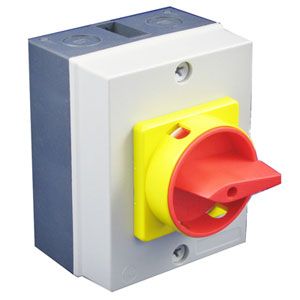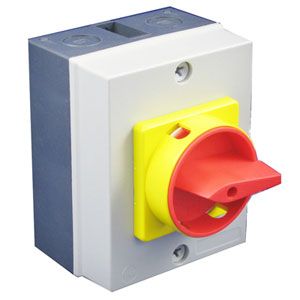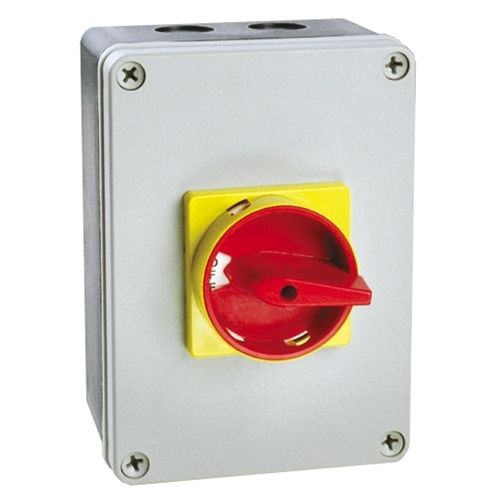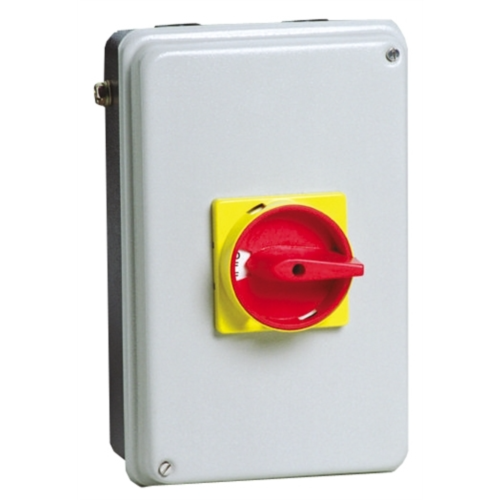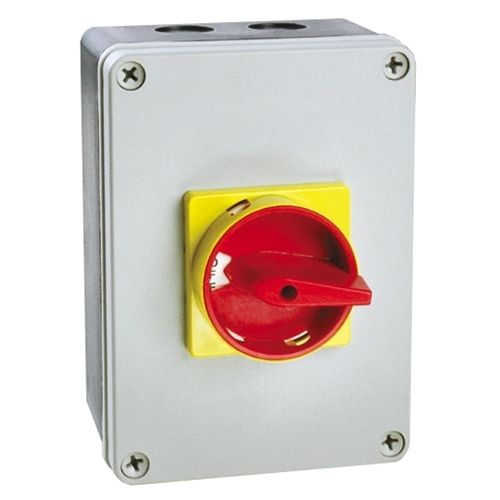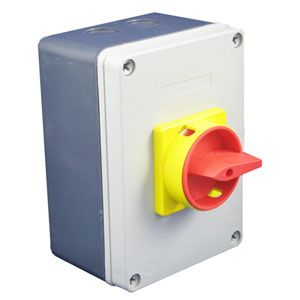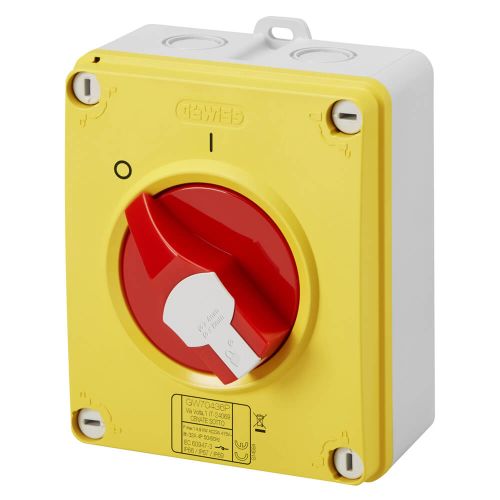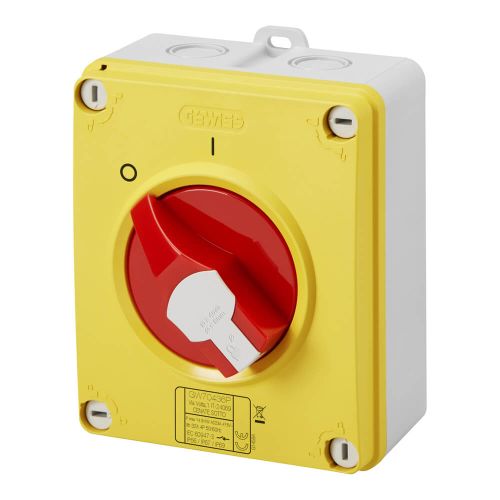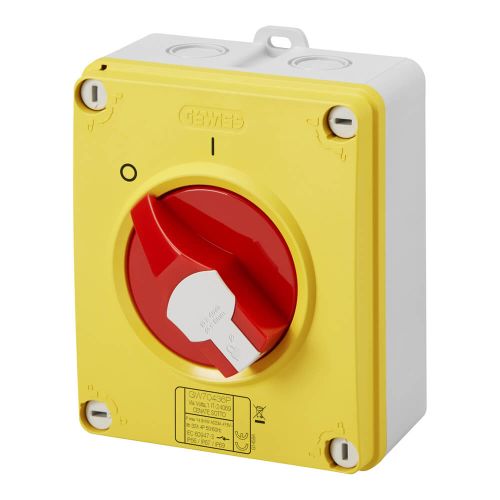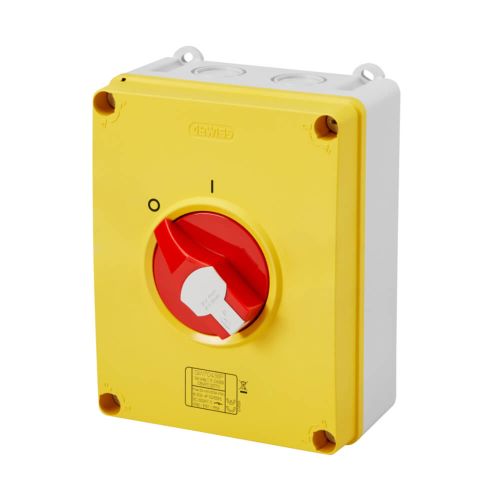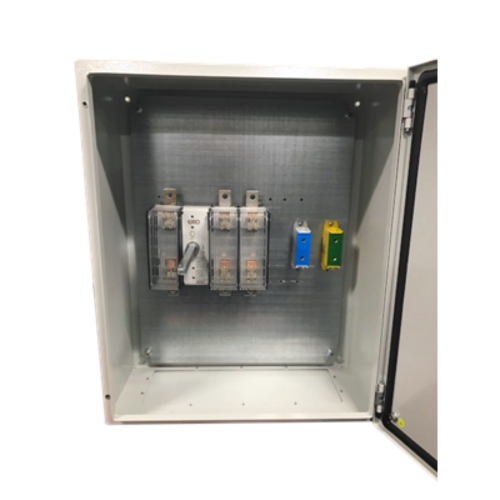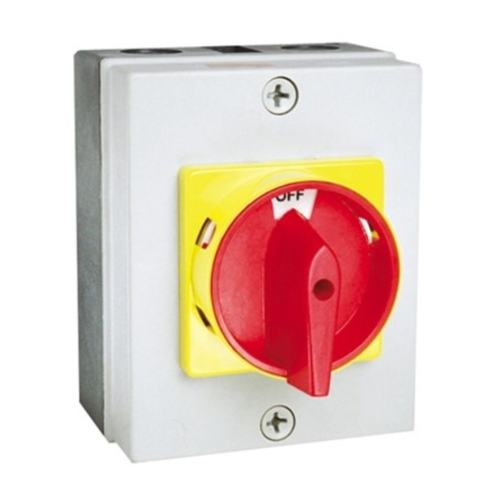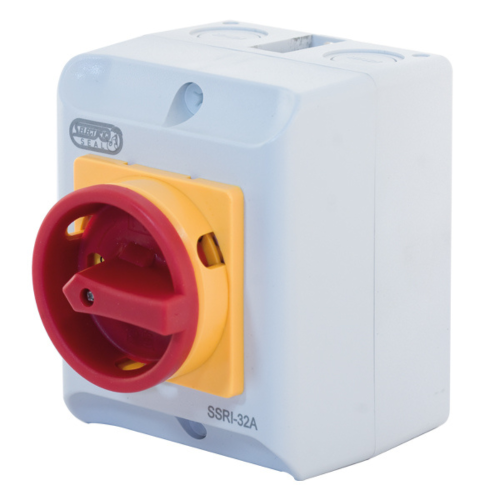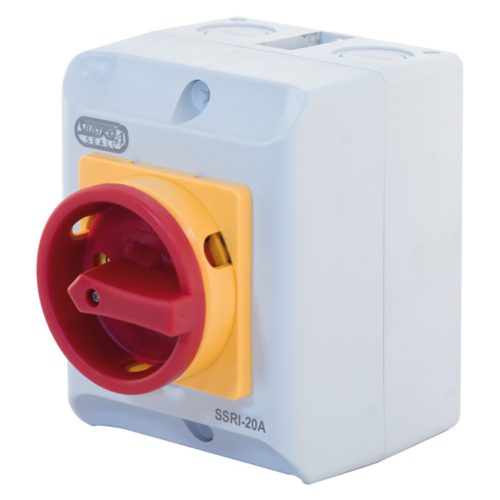TP&N Isolator & Switch fuses
TP&N stands for Triple Pole and Neutral. TP&N isolation switches are crucial electrical components to adjust electricity levels. TP&N isolators are necessary for cutting down the power supply to provide manageable access to electricity. Without a TP&N isolator switch, electricians increase the risks of getting harmed by dangerous levels of electricity.
Before you start using TP&N electrical isolator switches, it’s important to understand the TP&N isolator meaning. Once you know the TP&N isolator meaning, you will get a better handle on this equipment. Apart from the TP&N isolator meaning, here are some important things to know about TP&N isolators.
What are Isolators?
So what is an isolator? Isolator switches are typically found in an electrical distribution or industrial environment, where they are utilised to disconnect the power source when machine maintenance or repairs are required.
Our Range of TP&N Isolators:
The current ratings of the isolators range from 16A TP&N Isolator, 20A TP&N Isolator, 25A TP&N Isolator, 32A TP&N Isolator, 40A TP&N Isolator and 63A TP&N Isolator
At Meteor Electrical, we stock a wide range of isolators with 3 poles, 3 poles & netural and 4 poles:
3 Poles TP&N Isolators from 20A 3 Pole Isolator to 40A 3 Pole Isolator.
3 Poles & Neutral Isolators are available in 63A 3 Pole & Neutral
4 Poles Isolators range from 20 amp to 63amps.
Choose from a full range of isolator switches including polycarbonate weatherproof and metalclad TP&N isolator switches.
If you need any advice on our TP&N Isolators and Switchfuses, please email [email protected] or speak to a sales advisor on the live chat. Next-day delivery is available for all items in stock.
What Is A TP&N Isolator Switch?
To understand TP&N switches better, here’s a look at the TP&N isolator meaning. In the simplest terms, a TP&N switch is a mechanical switching device that isolates a device's input and output when in an open position.
In this TP&N isolator meaning, the device refers to electricity. Essentially, a TP&N switch allows you to isolate electricity for better management and to minimise safety risks.
If you deal with electricity, you understand that there are several risks. Using a reliable method to cut off the current and isolate a circuit is necessary. In this situation, you must use a TP&N switch. A TP&N switch is a standard electrical safety device, and it is essential for every electrician.
With a TP&N switch, you can quickly adjust electrical equipment and cut off the electricity supply to power down a specific area of an electrical circuit for service.
In a TP&N switch, the letters TP&N mean a 4-pole device with the 4th pole as neutral. In a TP&N isolator switch, the opening and closing only interact with the neutral component. TP&N isolator switches only protect the current flowing through only 3 poles. There is no protection for the current flowing through the neutral pole as it is the isolating pole.
Apart from TP&N isolators, there are also SPN isolators. SPN isolator stands for single pole and neutral. In an SPN isolator, only one single pole allows current flow. Unlike SPN isolators, the TP&N isolator is much more commonly used.
Therefore, if you are an electrician, you will find greater benefits with a TP&N isolator than with an SPN isolator. However, there are some applications for SPN isolators as well. Make sure to check your electricity work requirements before using an isolator.
TP&N isolators are used for a variety of electrical appliances and applications. You can use a TP&N isolator for power grids, kitchen, and outdoor tools. TP&N isolators are set apart to allow easy repair and maintenance in a circuit grid or power lines.
You can find TP&N isolators separate from other switches in a circuit system. However, it’s important to note that TP&N isolator switches and circuit breakers are not the same. Even though many people believe the TP&N switches and breakers do a similar job, there are key differences between their functions and abilities.
What Is The Function Of TP&N Isolators?
TP&N isolators are important as they protect electricians and engineers from the risk of electrocution. TP&N isolators prevent damage to the circuit hardware by reducing the short circuits and the overcurrent.
TP&N isolators also allow timely maintenance of circuit boards. TP&N isolators work by physically separating different sections of a circuit. This process is called an air break. TP&N isolators provide an extra level of safety and reliability because there is a high risk of the circuit blowing in an air break.
In the event of a rogue current, there is a high chance that the electricity will break the circuit and shut down the power supply. You must use a TP&N isolator with a protective layer to combat this situation.
All electrical components and types of equipment require routine servicing and maintenance. With current protection devices such as TP&N isolator switches, you get high-standard and quality equipment that protects every kind of circuit hardware; from residential circuits to industrial electrical systems,
A TP&N isolator switch is essential. You can also attach TP&N isolator switches to car batteries to protect car mechanics while they conduct repairs.
What Are The Different Types of TP&N switches?
Like most professional electrical components, there are several types of TP&N switches. These isolators are available in a variety of models, and they are designed for specific uses. Some Isolators are used for industrial circuit boards, while others are used for residential electrical equipment.
Some TP&N switches are manufactured for alternating currents, and other TP&N switches are used for direct currents. Rotary TP&N switch disconnectors have large analog dials for quick activation and deactivation. But TP&N switches for load breaks are designed to operate at a specific current rather than within a range of currents. Here are the different types of TP&N switches.
Poles
In electrical and mechanical terminology, a pole refers to the number of circuits a single switch will control. Therefore, a single-pole TP&N switch will control a single circuit, and a double-pole isolator switch will control two circuits.
Isolator switches are available in various pole configurations, ranging from single-pole to six poles. The most common pole isolators are triple pole isolators of TP&N isolators.
Isolator switches with a higher number of poles, such as a triple pole or four-pole, are commonly used with complex installation and electrical equipment. TP&N isolators have a higher capacity for withholding current; therefore, these isolator switches are much better at protecting other isolator switches.
Phases
TP&N isolator switches are divided into two phases - single-phase and three-phase devices. Standard isolator switch models are single-phase whole the three-phase isolator models are usually preferred for extremely high voltage equipment.
Three isolator components are combined in three-phased isolator switches to provide a high level of safety for engineers and electricians to carry out repair and maintenance work.
Amperage
The ampere or amp is the standard international unit of electrical current. In TP&N isolator switches, the amperage of an electrical circuit refers to the strength of the current running through the switch. Almost all isolator switches are designed according to maximum current ratings, including the highest current levels at which they will operate safely. This current level ranges from as little as 6 amps to 200 amps.
Mid-range isolators such as 20A TP&N isolators provide enough protection for most circuit units. Most mid-range models lie between the 20A TP&N isolator and 50A TP&N isolator. At Meteor Electrical, you can find various isolator switches according to amperage, including several 20A TP&N isolator switches.
The fuses in switch fuse isolators have their own amp rating, meaning the highest level of current passes through the individual fuse before they blow and break an electrical circuit. The two maximum ratings of a switch fuse are not always similar.
What Are The Different Classification Of Isolators?
Now that you understand the different types of Isolator switches, here are the different classifications for isolator switches. Every isolator switch is divided into 3 classes:
- Double break type isolator switch
- Single break type isolator switch
- Pantograph-type isolator switch
Double Break Type Isolator Switch
This type of isolator switch contains three loads of post-insulators. The middle insulator in this switch comprises a flat or tube-shaped contact that is turned straightly by a spin from the middle post insulator. The rotation of the middle post-insulator component is done by a lever method at the bottom of the post-insulator component.
Single Break Type Isolator Switch
In this type of isolator switch, the main contact point is separated between two elements. The arm contact shifts in the switch because of the post-insulator rotation upon which the contact elements are fixed.
Pantograph Type Isolator Switch
The pantograph-type isolator emits a current switchgear installation, requiring the least space in a circuit board. This type of insulator includes a post-insulator component as well as a functional insulator component.
What Appliances Work Best With Isolator Switches?
Most electrical appliances need an isolator switch. If you repair a device while powered on, you will risk an accident, regardless of the electrical appliance.
However, since wall sockets sometimes act as isolation switches, smaller appliances like irons, microwaves, and electric kettles don’t need a specific isolator switch before repairs are carried out. Here is a list of tools and equipment that benefit from isolator switches.
Extractor Fans
Extractor fans are one of the most popular equipment that works well with TP&N isolator switches. You can find extractor fans in kitchens or bathrooms, and these fans are necessary for removing stale and humid air.
The fan replaces this type of air with fresh air. Due to recent building regulations, more and more homeowners are installing extractor fans; therefore, it is necessary to add an isolator switch. Due to the sophistication of extractor fans and the power they maintain, they need isolator switches for repairs and maintenance.
Since these devices have a complicated wiring structure, extractor fans generally work well with 3-pole isolator switches because three lines typically need disconnection to isolate the fan completely. If no TP&N isolator switch is installed, maintenance requires shutting down a large group of circuits which could affect other appliances.
Showers
Electrical showers are commonly found in homes, and it is important to outfit them with an isolator switch since these showers are fitted in special locations. A special location refers to an area where installation comes with a greater risk of electric shock, and since bathrooms are humid and wet areas, they fall under this location category.
Therefore, for safety, electrical showers must have an isolator switch installed. Failure to install an isolator switch for shower breaks several safety and electrical codes. A shower with a complex repair will cost you in the long run.
Refrigerators
Refrigerators, especially the large ones, need an isolator switch to reduce the challenges associated with repairs and maintenance. Similar to showers, refrigerators are close to water, and this location is dangerous to work in if not handled carefully.
Almost all freezers and refrigerators have sockets that are difficult to reach, which means you need to move or touch the appliance. This process is dangerous if there is faulty wiring or a short circuit. In these situations, you must install an isolator switch to minimise hazards and safely meet electrical codes for kitchen appliances.
Air Conditioners
Most electricians hardwire the air conditioner to the switchboard. While it is okay to do this, there are certain drawbacks to hardwiring your AC, and it can also lead to hazardous conditions in some cases.
You should equip your air conditioner unit with an isolator switch to protect your appliance from lightning strikes in a storm. An isolator prevents your home safety switch from tripping if there is a faulty circuit.
Other Household Appliances
Even though isolator switches are commonly used with larger appliances and power grids, they also work well with smaller at-home appliances. However, there are certain factors you must consider before using an isolator switch with smaller appliances.
Where To Install TP&N Isolator Switches?
Knowing where to put your TP&N isolator switches is very important to ensure your safety and the safety of your circuits. This location plan follows the electrical installment standards set by the national regulations.
Generally, many electricians recommend installing isolator switches away from the appliance but within reach of the said appliance to ensure easy manipulation and access. Here are some important things to consider when installing TP&N isolators.
Install Close To Appliance
Most electricians recommend installing isolator switches close to appliances, making regular maintenance easier. To ensure the good health of your products, you must carry out frequent maintenance and give easy access to your switches for any repair.
This location ensures the safety of everyone as a TP&N isolator switch installed in the incorrect location becomes a breach of safety rules and can also lead to potentially dangerous situations.
For example, suppose an isolator device for an extractor fan is far away from the general area of the electricians. In that case, the device could be turned on by another person who is unaware that maintenance is being carried out. In this situation, there is an increased risk of injury to the electrician. Therefore, installing your isolators close to the appliance is important to avoid hazardous conditions.
Keep The Space Accessible
Apart from installing your isolators close to the appliance, it is also important that the location should be accessible. The area where your isolator switch is located should be in an accessible space without any obstructions.
Avoid installing your isolator switches behind other items that need to be moved to access the switch. Easily accessible locations make the maintenance process much more seamless.
How To Install TP&N Isolator Switches?
Like any other electrical component, isolator switches can increase the risk of danger if they are not wired correctly. Make sure to follow all the necessary wiring regulations before installing an isolator switch. Always consult a qualified electrician if you are unsure about how to install isolator switches.
Here are the steps for installing an isolator switch:
- Make sure the wiring you plan to use for isolator installation is fully compatible with the switch and its rating meets the expected current.
- Ensure that the current to the relevant wires are cut off before proceeding.
- If applicable, remove the previous socket along with any dust or debris in the wall box.
- Attach the load and supply cables. Wire the internal conductors and earthing wire to their corresponding terminals and follow the isolator schematic as the layout of the terminals varies from model to model.
- Peel back a section of the insulation from each conductor to allow the copper wiring to make direct contact with the screws. Cut off any extra protruding strands. Connect the earthing wire in each cable to the corresponding terminal on the switch. The wire should run the length between the earthing terminal to the wire box.
- Some isolator switches have a plastic gasket or a mechanical seal. This component should be placed between the wall and the device.
What Is The Difference Between TP&N Isolator Switches And Circut Breakers?
A circuit breaker is a protection device, and the main function of a circuit breaker is to protect a circuit or equipment from overload and short circuit breaks. Circuit breakers can sense such problems and interrupt the power flow to the circuit/equipment.
This process prevents further damage to the equipment. With this function, you can see how different a TP&N isolator is from a circuit breaker.
Isolator switches are only meant for interrupting power during maintenance or repair, whereas a circuit breaker is meant for the protection of a circuit during overload faults when they are in operation. Isolator switches can only be operated during offload, but circuit breakers can be operated during offload and on load.
What Are The Best TP&N Isolator Switches On The Market?
At Meteor Electrical, you can find a variety of isolator switches. Here are some of the best isolator switches on the market.
- Garo 20A TP&N isolator switch
- Garo 32A TP&N isolator switch
- Gewiss 32A rotary isolator switch
- Deligo 20A TP&N isolator switch
- Garo 63A 4-pole isolator switch
FAQ's
- What is a TPN Isolator?
- Where are TPN Isolators used?
- What is a TPN Switch?
- Do you have different Amp ratings available in the TPN Isolators and Switches?
- What is the purpose of a TP+N isolator switchfuse?
- How does a TP+N isolator switchfuse work?
- What are the key features of a TP+N isolator switchfuse?
- What are the benefits of using a TP+N isolator switchfuse?
- How do I choose the right TP+N isolator switchfuse for my application?
- How do I install a TP+N isolator switchfuse?
- How do I maintain and service a TP+N isolator switchfuse?
- Are there any safety precautions I should follow when using a TP+N isolator switchfuse?

